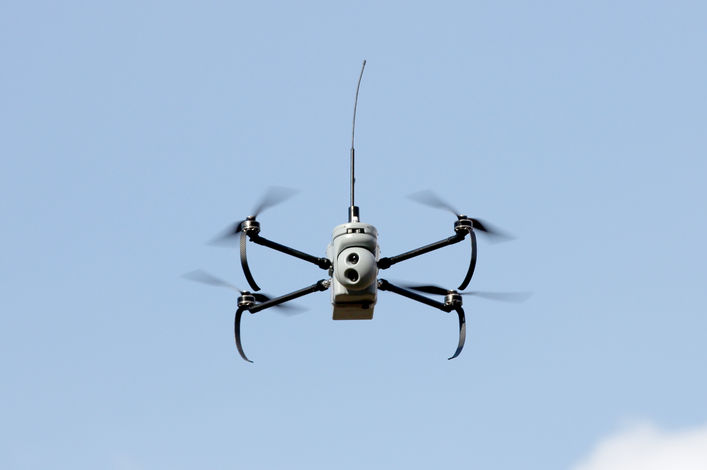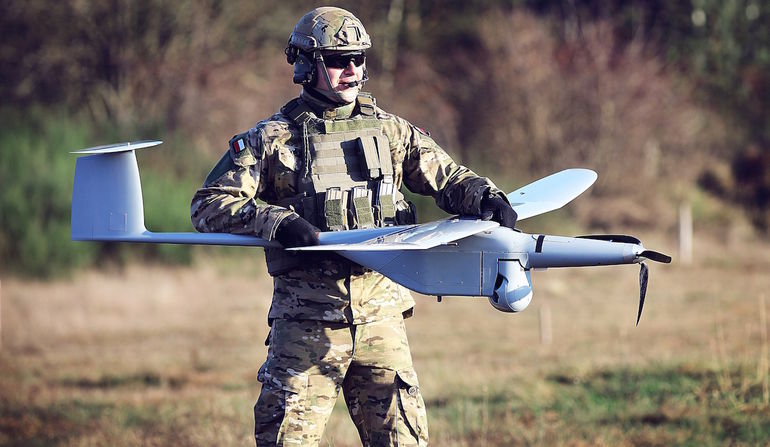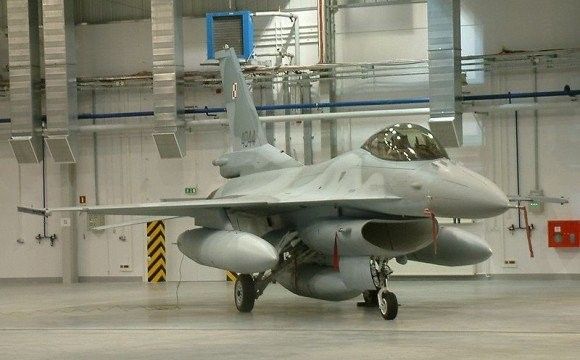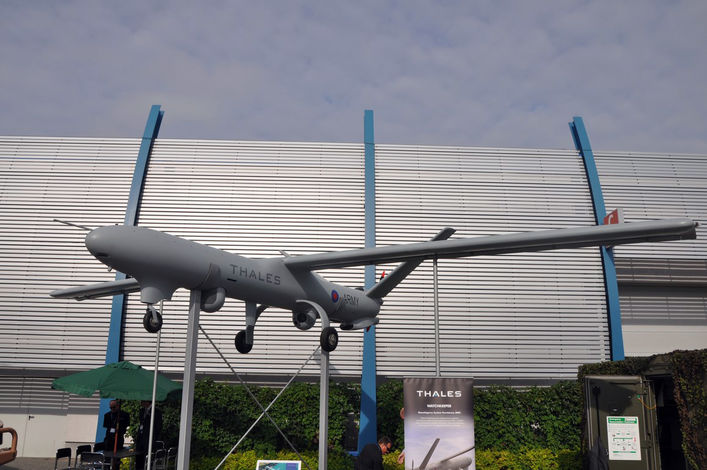Armed Forces
WB Electronics Endorses Polish UAV Technologies. Gryf? “We are in possession of proper capabilities”.
WB Group offers the UAV systems both within the Orlik, Wizjer, as well as within the Gryf tactical medium range UAV programmes, run by the Polish Ministry of Defence. Ministry’s stance assumes that the Polish companies would not be capable of delivering this class of systems – the Ministry’s knowledge is outdated – we have been developing our capabilities throughout the last couple of years. Thus – today we may state that we are in possession of proper capabilities – as the President of the WB Group, Piotr Wojciechowski, stated.
During a special media briefing, the representatives of the WB Electronics company presented the capabilities and successes they have achieved, in case of all of the UAV categories that are being considered within the scope of the Polish Armed Forces procurement plans, excluding the area of the largest MALE-class UAV systems (Zefir programme). When it comes to the latter category, the manufacturer does not sense enough market interest, regarding a programme which would be (potentially) that costly. However, WB notes that the obstacles are purely demand-driven, and that technologies possessed by the company are a non-issue here.
In the remaining programmes – mini-VTOL Ważka (Dragonfly) UAV, Wizjer (Visior) conventional mini-class UAV and brigade-level Orlik (White Eagle) UAV and, finally, Gryf (Griffin) programme – WB offers products which – according to the company – exceed the scope of the requirements that are formulated by the Armament Inspectorate. Considering the fact that the procurement requirements related to the UAV systems are confidential, one cannot compare the above-mentioned parameters to the presented UAV’s, thus a detailed assessment of compliance within that scope is impossible.
Ważka, Wizjer and Orlik

A large part of the WB Group’s UAV offer has been financed by the Polish Ministry of Defence of by the National Centre for Research and Development. For example, the Virtus quad-copter offered within the scope of the Ważka programme was created as a result of two MoD-organized contests, one of which took place in 2008, and the other one was announced back in 2012. At the time, WB Electronics offered the best technology and the best prices and received funding, the aim of which was to create a production variant of the Virtus system.
As the only company taking part in the contest we have been able to propose that 50% of the programme would be funded by us. And the design turned out to be successful (...). However, the current situation is that even though the Army assigned 50% of the required funds, the system has gone through the test programme involving the military, a procurement programme regarding this type of vehicles is executed. (...) Even though the Polish Army owns the copyrights.
When it comes to the Wizjer UAV system which is going to be utilized at the battalion level, Komorniczak states that the required capabilities defined by the Polish Army are reachable by the WB Electronics FlyEye system.
This change is very simple, it concerns mainly the software – so that it has been defined as the FlyEye 2.0. The Polish Army currently uses almost 100 FlyEye drones, and 200 Polish soldiers have gone through training, the aim of which was to prepare them to fly the FlyEye UAV system. Maintenance, training and operational support system exists, and the UAV itself is manufactured in Poland.

Within the scope of the Orlik programme, WB proposes an electric/internal combustion hybrid propulsion Manta UAV which – in the variant developed in order to meet the requirements of the Polish Army – is referred to as the FlyEye TUAV (FlyEye Tactical Unmanned Aerial Vehicle). The airframe is constructed in a “flying wing” layout, and it is capable of conducting 12-hour long sorties, up to 200 km from the ground control station, at altitudes of up to 5 thousand meters. The drone is equipped with EO/IR optronic system featuring a laser range-finder and laser target designator, Synthetic Aperture Radar and is able to carry a wide variety of optional payload, including LIDAR system, contamination detector or radio-electronic reconnaissance system. The UAV is currently going through an intensive flight-test programme in its conventional variant, however, a VTOL version is also being tested. Starting from November last year, Manta UAV is allowed to fly in the public airspace, in the same way as the manned aircraft, thanks to the special certificate granted by the Polish Civil Aviation Authority.
WB Group also possesses an alternative solution that may be proposed within the Orlik programme. It is the FlySAR UAV which was initially designed in order to conduct the test programme related to the Polish-design Synthetic Aperture Radar. The device designed by the Military University of Technology weighs only 10 kilograms, it may be fitted both in case of the FlySAR, as well as in case of the Manta UAV. Half of the project, the value of which is estimated to reach PLN 8 million, was financed by the National Centre for Research and Development. FlySAR UAV is based on a conventional airframe featuring an internal-combustion propulsion system which drives a pulling propeller, with parameters and total weight close to those of the Manta UAV. The UAV may be offered within the Orlik programme, should it be tailored better to the requirements of the procurement administrator.
Gryf from Poland?
Deputy Minister Czesław Mroczek announced in June this year that Zefir MALE UCAV’s and Gryf medium range UAV’s are going to be acquired by the armed forces within the scope of the prospective intergovernmental agreements – and the same recommendation was issued by the Ministry of Defence. According to the representatives of the WB Electronics company, the above decision is premature.
There is no reason, as to which Gryf and Zefir systems should be interconnected. This is a different level of technology, different scale of operations, with a different set of requirements. There is no reason to fuse the programmes, the aim of which is to procure MALE and tactical UAV’s – these are separate classes of the vehicles. We must realize that collection of the information related to the competences of the national subjects, regarding the Zefir and Gryf UAV’s, had been carried out several years ago (...) Our company is being constantly developed, we create new technologies and systems – had it not been for that, we would be quickly eliminated from the market. (...) MANTA UAV is the best example here. Two years ago the system was at the design stage. Now MANTA is flyable, all of the assumed design parameters have been achieved (...) Thus, today we are informing that within the UAV area – not only are we in possession of technologies, we have also tested and proven these technologies on the foreign markets. These technologies refer to the tactical UAV systems needed by the Polish Ministry of Defence.
In order to increase the chances in the tactical UAV procurement programme, WB Electronics signed a cooperation agreement with the Thales UK company which manufactures the WH450 Watchkeeper UAV system. Not only is the above cooperation tied to the offer for Poland – as it was admitted by Wojciechowski – as one of the points of focus is to sell the jointly-developed UAV systems to the third countries. The British company is interested in the lighter UAV systems, such as the FlyEye, in order to fill the gap in its offer, as the Thales UK’s offer does not include any counterpart of such system. Interoperability of the UAV systems designed by both companies is going to be one of the effects of the joint cooperation. The above means that the ground control system of the Watchkeeper UAV will be capable of controlling the WB Electronics UAV’s and other way round.
The joint proposal within the Gryf programme is going to ensure that there is a high degree of contribution of the Polish industry when it comes to the key technologies, such as the data link, mission computer, software, observation and cryptographic systems, integration with the communication, command and control suites.
It is a better solution to acquire the airframe abroad, since it constitutes one of the cheapest elements of the system – 10-15% of the total price. The elements inside are definitely more relevant here. The “brain” of the whole system is responsible for its operation – and this element has already been developed by the Polish companies. I would like to recall the fact that the Ministry of Economy provided us with PLN 200 million in order to develop the most important technologies, which are of crucial value for the UAV systems, here, locally, with involvement of the Polish companies and research and development centres.
Polish technology, beyond maintenance
WB Electronics is stressing the fact that the Polish MoD should be focused on the Polish technologies and on enhancing the Polish industrial capacities, and properly using the qualifications that are already available locally. The Treasury provided and still provides funding, the aim of which is to realize numerous programmes within the field of design and development of the unmanned systems, not only in the field of the aerial vehicles. The Ministry of Defence itself is often a co-owner of the copyrights related to the already developed solutions. Despite that the Ministry plans to acquire the UAV systems from the free market. These systems are often based on foreign key components and systems.
We must decide whether we are planning to shape the perspectives of the Polish industry, or whether our focus is to create transitional solutions which would fulfil our needs for now. (...) The key issue, from the economic point of view of the Polish government, is whether we are utilizing and developing our own potential and technologies, which may be subsequently exported to the third markets, or whether the assets used to realize the given procurement make it possible to support the given technology abroad. (...) We shall use the capabilities offered by the Polish industry to realize the manufacturing process. Thus, only a Polish entity would be capable of developing this product and of absorbing the amount of knowledge required to create the industrial capabilities for the future generations. (...) Acquisition of the maintenance capabilities creates capacity which is of a very local, fragmented character, and which has a limited or even no impact on the country’s economic growth. This only secures the interest of a single recipient, who receives the maintenance services.




